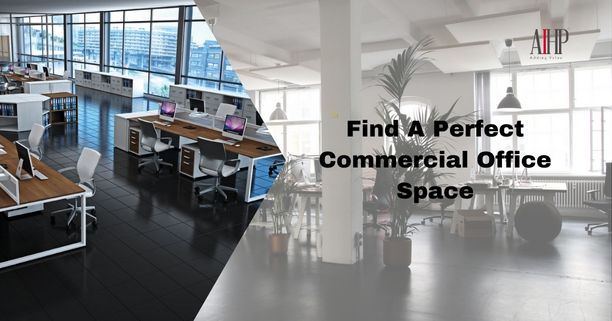7 Trends of Commercial Offices for Efficiency Boost
Brands are emerging and so is their need to expand and become a part of the business hubs. That has led to the development of multiple industries and the rise and fall of trends in commercial office spaces. However, not every trend helps a business perform better in the industry.
Therefore, it is crucial for a company to create these spaces to provide the best support to companies who are looking towards expanding their business. Therefore, here are 7 trends that the brands who are trying to design a commercial space for rent can take up to offer an attractive option to the companies.
7 Emerging Trends in the Office Space Industry
As technology and the workforce evolve, office management strategies are constantly changing. To reinforce the management solutions, the office spaces are leveraging the advancements to give support to the brands in multiple ways.
-
Sustainable Spaces
In the post-pandemic situation, the world has massively shifted to environments which are healthy, a co-existence with plants and have efficient air conditioning. The sustainability aspect of office spaces is very crucial today. People are understanding the need to use materials that are environmentally friendly.
Furthermore, using technologies which are keeping hygiene alive too. People want to keep a safe distance from germs and other contaminants and thus these types of offices are becoming a more important choice. If the office is a co working environment, then the amenities need to be more tech-leaning. Minimal-touch equipment and larger spaces are a massive requirement.
-
Touchdown Desks
Gone are the days of people sitting at a fixed desk with their heads stuck to the table. The businesses have multiple departments which require the employees to move around the office and work collaboratively. Different teams have to communicate constantly.
Thus, the requirement has shifted from simple desks to designed slabs with a lot of open space. The teams might require spaces to communicate with each other work on their devices and much more. Therefore, the convertibility of the desks is an amazing design addition that businesses love to see.
-
Internet as a Service
The new office spaces require a lot of amenities. Every company today works on the internet and requires it all the time. Therefore, modern spaces need to have the support of the internet and a great deal of connectivity. It not only eases the initial work of a company but also makes the space look more corporate in the first place.
The connectivity through different LAN ports and wi-fi coverage can make a huge difference. Furthermore, an office space can provide the internet as a service to the brands who are going to settle in the space.
-
Technologically Fit Workspaces
It is not just about the work or the hardware they use, but it is also about the way they work, the environment that is in, and access to comfort and other amenities. Thus, having access to technology can make the workplace considerably better for the efficiency of the employees. Depending on tech eases off much of the workload.
Brands are putting more and more effort towards getting a workspace which is efficient in ways. The sustainable aspect of the office is just one part of it all. Access to electronically advanced systems at entry points, and all over the office gives ease of work to the employees as well.
-
Embracing Repurpose
As the year passed, large companies and start-ups have begun to focus on repurposing and redesigning their existing office spaces. The judicious use of available spaces and retrofitting of properties will be a trend in the coming year. The alternative use of existing spaces to maximize value will be a trend in large as well as small companies.
The role of interior designers and architects will play a major role in office space optimization going forward. In addition, uncertainties associated with new variants of coronavirus are leading companies to tread cautiously in terms of investment in new office spaces.
-
Interactive and Open Spaces
This line of thought examines ways to redesign buildings based on what people do. Employees come to work in the morning, check their e-mail and voicemail, and have meetings in the open space. They can also have confidential meetings in private enclaves. The fact that workers have small spaces does not mean they have fewer activities to choose from, because they can use a coffee bar and library as well as many other common areas.
A brand actually made one entire wall of these pint-sized enclaves by designing each room with a sofa, desk, chair, laptop power source and phone connection; however, this idea did not work out when implemented due to the cost involved with building something like that there.
-
Redefined Lease and Rental Terms
The pre-pandemic lease terms were notorious for rigid terms and conditions and non-flexible payment plans. However, the pandemic has altered the way the world works, and so has the working style of lease providers. The professional office spaces will now be available at flexible and negotiable lease arrangements.
As the uncertainties are still to fade away completely, companies prefer a no-strings-attached relationship with their tenants. The icing on the cake is that these relaxed lease terms are coupled with flexible or deferred payment plans. This kind of arrangement is a win-win for both businesses and operators.
The Bottom Line
2022 worked out great with no touch of new virus strains. Thus, 2023 will also prove to be a great year that will boost brands to work enormously in the new market. The new lease and rent policies along with the amenities and facilities can help businesses to boost their efficiency and workflow. When companies in the market will seek a commercial property on rent they most probably look for the latest support like the abovementioned aspects.
AIHP is thus working to offer world-class office spaces for rent that make use of modern trends. The boost in productivity allows companies to work better without thinking about support or other services. Access to the amenities is a part of the process.






